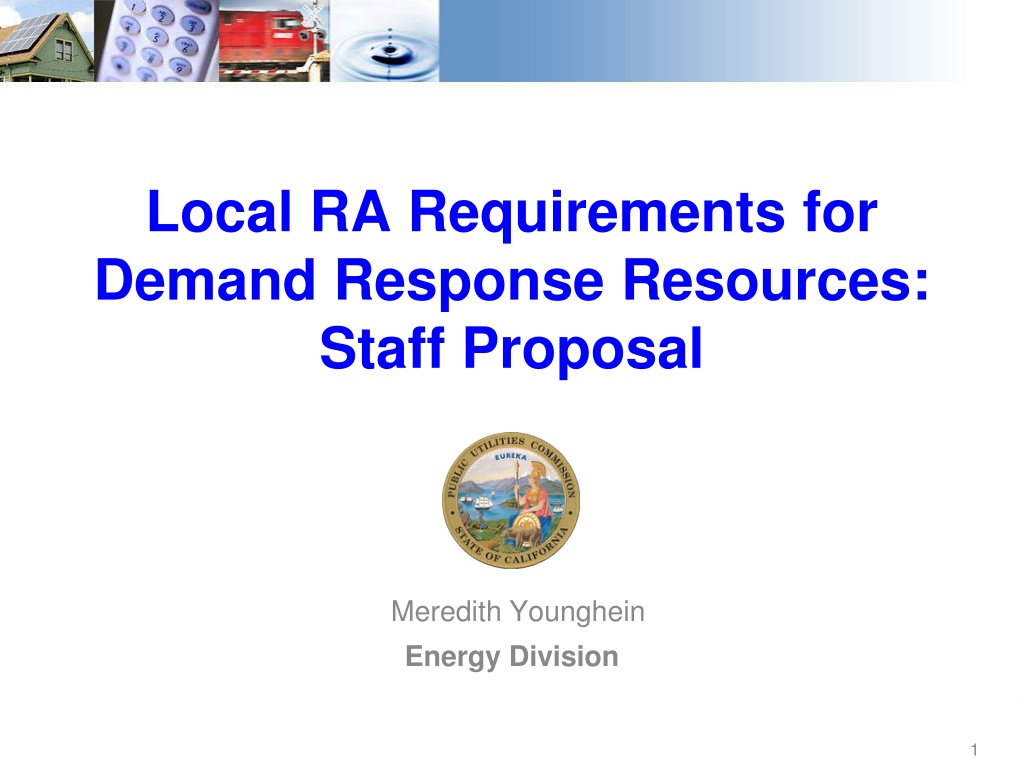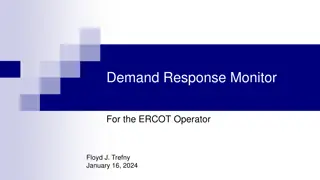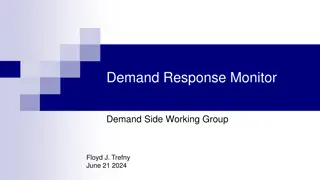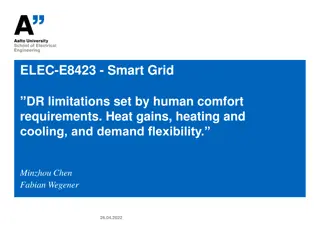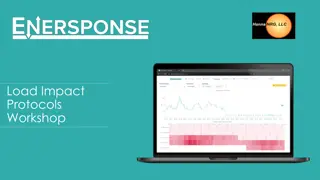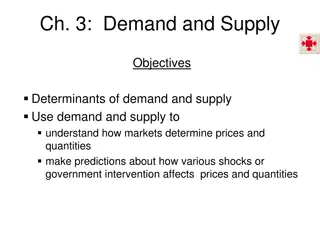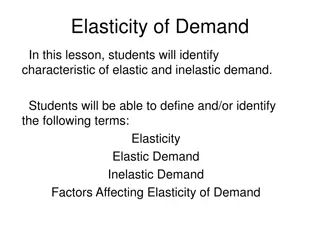Understanding Local RA Requirements for Demand Response Resources
Explore the factors influencing the maintenance of current requirements for demand response programs, including response times and procurement considerations. Learn about CPUC decisions emphasizing fast-responding DR resources and recent rulings on demand response auction mechanisms. Discover how local capacity requirements are determined based on the most severe contingencies in Southern California.
Download Presentation

Please find below an Image/Link to download the presentation.
The content on the website is provided AS IS for your information and personal use only. It may not be sold, licensed, or shared on other websites without obtaining consent from the author. Download presentation by click this link. If you encounter any issues during the download, it is possible that the publisher has removed the file from their server.
E N D
Presentation Transcript
Local RA Requirements for Demand Response Resources: Staff Proposal Meredith Younghein Energy Division 1
Maintaining current requirements for 2017 procurement proposal for 20 minute response time requirement was considered in 2015, and rejected Procurement direction for 2017 DR programs already developed in DR proceeding DR Bifurcation is underway. Large quantities of supply-side DR is located in local areas and therefore have been given a Local RA value. Response times of DR programs vary, based on required notification times for DR participants, and whether or not the DR is automated. Examples of the fastest responding DR programs are the Base-Interruptible program (BIP) and the A/C Cycling program. 2
Relevant CPUC Decisions D.14-03-004 (2012 LTPP Track 4-SoCalReliability) discussed the issue of fast responding DR resources at length defined as resources that can respond in 30 minutes. record establishes that DR with potential to be activated in 30 minutes or less after a contingency event should be counted as addressing the first contingency to prepare for the second contingency in procurement resulting from this decision. This implies that such DR should be counted to meet local capacity requirements for long term procurement purposes. 2014 LTPP Assumptions and Scenarios ruling mentions the 20 minute DR response time by saying that DR resources may need torespond in 20 minutes to deal with a contingency event. 3
Recent Ruling on DRAM (E-4754, 1/27/16) Demand Reponse Auction Mechanism year 2 procurement Contracts would be executed in late May and submitted to the CPUC for approval in mid-June Deliveries :1/2017 --12/2017.
All RTOs/ISOs are subject to NERC BAL-002 and TOP-001 to 004. No other ISO/RTO requires DR to be dispatchable with 20-minutes notification in order to qualify as a Local Capacity Resource. The requirement is upon the system operator, not upon any resource. CAISO is singling out storage and DR as uniquely use limited. CAISO is stating that resources with adequate energy for frequent dispatches are exempt.
Local Capacity Requirements are determined in the LTPP based upon the single most severe contingency: Southern California, that is an N-1-1 event, sequential loss of 2 major transmission corridors. Determine if there is sufficient capacity in the local areas Resource adequacy determines the operational requirements of resources to meet local, system and flexible capacity needs (MOO).
Reliability Services Initiative (RSI) Conditionally approved by FERC Establishes MOO for DR resources for system and local capacity purposes FRACMOO established a MOO for DR flexible capacity resources PRR 854 creates a 20-minute notification for resources that do not have sufficient energy for frequent dispatch. JDRPs, along with others, protested and appealed PRR 854 on process and substance.
Process Significant operational change for DR that was not discussed in a stakeholder process Failure to appreciate the CAISO s concerns Failure to present other solutions. Substance Inconsistent with CPUC RA requirements CAISO has not demonstrated why frequent energy dispatch is a necessary component for a resource being exempted from the 20-minute notification A significant percentage of generators cannot change their dispatch instructions in 20 minutes N-1-1event is not a frequent occurrence, unless the CAISO is using some other definition of contingency.
Due to lack of process, no other proposals were considered. In the event of a contingency, use-limited resources will be required to be dispatchable within 20- minutes notification. In non-contingency conditions, use-limited resources will respond to normal market dispatch instructions. CAISO s proposal is disruptive to DR market integration.
